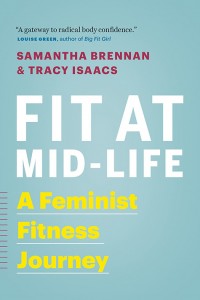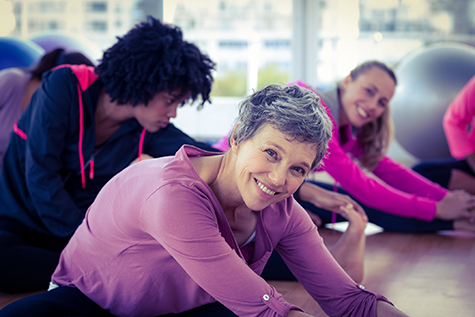How To Get Fit at Mid-Life

What if you could be fitter now than you were in your twenties? And what if you could achieve it while feeling more comfortable and confident in your body than ever before?
On the eve of their 48th birthdays, authors Samantha Brennan and Tracy Isaacs set out to achieve a daunting feat: to become the fittest they’d ever been in their lives by the age of 50. To chart their progress, they created their blog Fit is a Feminist Issue, dedicated entirely to the unique challenges, questions, and issues they would face as women seeking fitness after the age 40. Soon, they had a community of thousands following their story. Women, it was clear, were looking for something different: a new approach to fitness that would champion strength, health, and personal accomplishment over weight loss and aesthetics.
 Taking a feminist perspective in their new book, Fit at Mid-Life: A Feminist Fitness Journey, the authors also challenge society’s default what, why, and how of every aspect of getting fit to show how women can best take charge of their health―no matter what their shape, size, age, or ability.
Taking a feminist perspective in their new book, Fit at Mid-Life: A Feminist Fitness Journey, the authors also challenge society’s default what, why, and how of every aspect of getting fit to show how women can best take charge of their health―no matter what their shape, size, age, or ability.
Women often sacrifice exercise because they’re busy doing a lot of the childcare and a lot of the elder care while working full-time. Also, lots of women think they have to lose weight before they put on athletic clothing – it’s a huge deal for people.
One of the messages Brennan would like to get across is to loosen up the pressure on women to look a certain way and think of fitness in such narrow terms. She complained to a gym at one point because they had no posters up that weren’t about weight loss. “I’m not saying you should have weight loss messages there – it’s why lots of people come to the gym. But why can’t we have some that are about stretching and flexibility, some that are about your 5K time and some that are about enjoying the company of your friends in your aqua-fit class?”
The book offers suggestions on how to achieve a sustainable routine. Have you ever gotten all enthusiastic about something—a diet, tennis, a new partner, Twitter—and jumped in gung ho, only to feel the initial burst of energy start to fizzle over time? The long haul, day in and day out, is what matters. Here are some principles suggested as guidelines for keeping it realistic:
- Choose things you enjoy.
- Make it about fitness and performance, not weight loss and looking a certain way.
- Embrace variety and try new things.
- Make activity a part of your daily life.
- Find a community.
- Set goals and take the long view.
- Develop healthy habits.
- Focus on yourself instead of comparing yourself to others.
- Be willing to scale back and do less.
- When it comes to setbacks, be gentle, self-forgiving, and kind.
- Incorporate rest and recovery into your routine.
If you’re sick of the latest diet tips to drop two dress sizes in a month, and you’d rather use Aikido to throw a full-grown man to the ground, pick up this book and prepare to be inspired.

